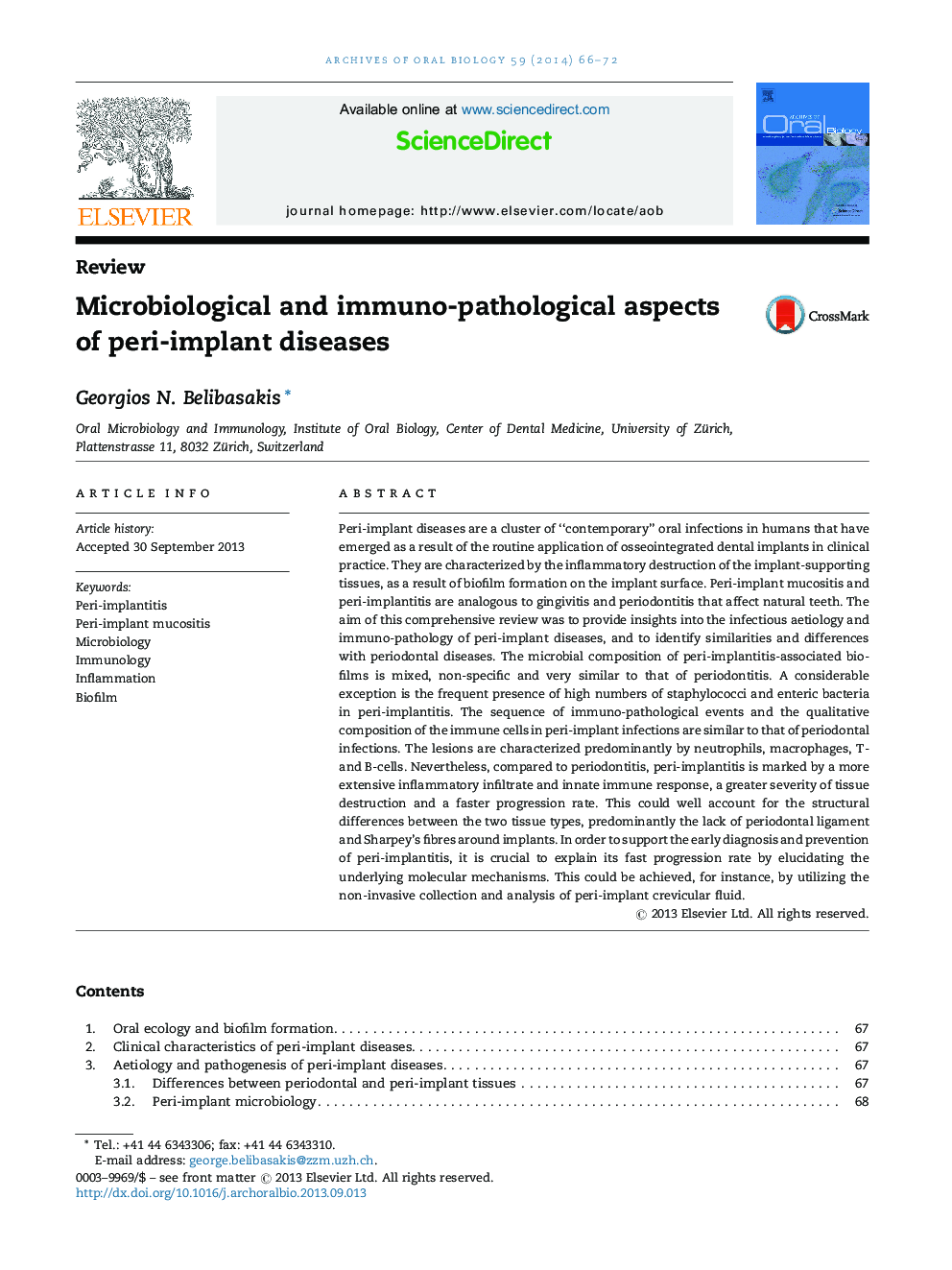| کد مقاله | کد نشریه | سال انتشار | مقاله انگلیسی | نسخه تمام متن |
|---|---|---|---|---|
| 6050994 | 1583316 | 2014 | 7 صفحه PDF | دانلود رایگان |
Peri-implant diseases are a cluster of “contemporary” oral infections in humans that have emerged as a result of the routine application of osseointegrated dental implants in clinical practice. They are characterized by the inflammatory destruction of the implant-supporting tissues, as a result of biofilm formation on the implant surface. Peri-implant mucositis and peri-implantitis are analogous to gingivitis and periodontitis that affect natural teeth. The aim of this comprehensive review was to provide insights into the infectious aetiology and immuno-pathology of peri-implant diseases, and to identify similarities and differences with periodontal diseases. The microbial composition of peri-implantitis-associated biofilms is mixed, non-specific and very similar to that of periodontitis. A considerable exception is the frequent presence of high numbers of staphylococci and enteric bacteria in peri-implantitis. The sequence of immuno-pathological events and the qualitative composition of the immune cells in peri-implant infections are similar to that of periodontal infections. The lesions are characterized predominantly by neutrophils, macrophages, T- and B-cells. Nevertheless, compared to periodontitis, peri-implantitis is marked by a more extensive inflammatory infiltrate and innate immune response, a greater severity of tissue destruction and a faster progression rate. This could well account for the structural differences between the two tissue types, predominantly the lack of periodontal ligament and Sharpey's fibres around implants. In order to support the early diagnosis and prevention of peri-implantitis, it is crucial to explain its fast progression rate by elucidating the underlying molecular mechanisms. This could be achieved, for instance, by utilizing the non-invasive collection and analysis of peri-implant crevicular fluid.
Journal: Archives of Oral Biology - Volume 59, Issue 1, January 2014, Pages 66-72
